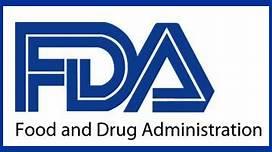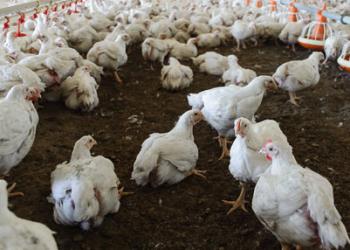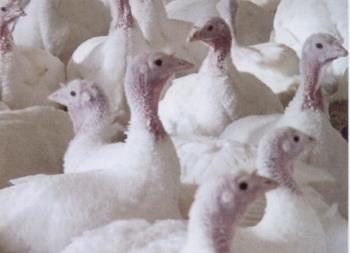 On December 15th the U.S. Food and Drug Administration (FDA) published a summary report on antibiotic use in livestock entitled Antimicrobials Sold or Distributed in 2019 for Use in Food-Producing Animals. This document follows the previous annual review of antimicrobial use and covers 2019. The comprehensive report includes sponsor estimates of product sales but the data is an accurate record of antibiotic use by class and by livestock segment.
On December 15th the U.S. Food and Drug Administration (FDA) published a summary report on antibiotic use in livestock entitled Antimicrobials Sold or Distributed in 2019 for Use in Food-Producing Animals. This document follows the previous annual review of antimicrobial use and covers 2019. The comprehensive report includes sponsor estimates of product sales but the data is an accurate record of antibiotic use by class and by livestock segment.
The data presented is required under the Animal Drug Use Act of 2018 that mandates that every sponsor of an approved animal drug containing an antimicrobial active ingredient must report to the FDA the amount of each ingredient in that drug product sold or distributed for use in food-producing animals.
The report should be considered in relation to Guidance for Industry Documents #213 and #152 that classified antibiotic classes as either “medically important for human therapy” or “not medically important”. It is noted that commencing in 2017 Veterinary Feed Directives or prescriptions were required for feed additives or water-administered antibiotics respectively.
In 2019 11,473,712 kg of antibiotic, expressed as active ingredient was marketed. Of this total, more than 99.5 percent was used domestically with only a small fraction exported.
 The total of medically important antibiotics used in 2019, comprising nine classes, amounted to 6,189,260 kg of active ingredient (13.6 million pounds). The use of non-medically important antibiotics of which 89 percent comprised ionophores attained 5,279,098 kg of active ingredient (11.6 million pounds).
The total of medically important antibiotics used in 2019, comprising nine classes, amounted to 6,189,260 kg of active ingredient (13.6 million pounds). The use of non-medically important antibiotics of which 89 percent comprised ionophores attained 5,279,098 kg of active ingredient (11.6 million pounds).
The Executive Summary of the report demonstrated a decrease of 36 percent in antibiotic use from 2015 through 2019 and a decrease of 25 percent from 2010 through 2019. With specific reference to 2019 for all food species tetracyclines accounted for 66 percent of medically important antibiotic use; penicillins, 12 percent; macrolides, 8 percent; sulfas, 5 percent; aminoglycosides, 5 percent; lincosamides, 2 percent and cephalosporins 0.5 percent. Fluoroquinolones use accounted for less than 0.4 percent consistent with the previous ban on this class of antibiotics in food-producing species.
In evaluating medically important antibiotic drugs approved for use in food-producing animals marketed in 2019 a total of 6,189,260 kg was used in cattle, swine, chickens and turkeys representing a reduction of 26 percent from 2016 but 3 percent more than in 2018. The “other” category for non-food producing animals and minor food-producing species including fish amounted to 3.8 percent of the 2019 total to be subtracted from the 6,189,260 kg. for all food-producing animals.
Chicken (presumed to be broilers and breeders) consumed 3.1 percent of the total or 192,964 kg. Turkeys consumed 10.4 percent of the antibiotics used in food producing animals. The administration of antibiotics in egg-production was negligible and for the purposes of the FDA report any use in this sector was included in the “chicken” category.
 To determine the relative use of antibiotics in chickens and turkeys and the differences between 2016 and 2019 the use of antibiotics expressed in mg. was compared to production (RTC) in kg. For chickens in 2016 for each kg of RTC product 26.0 mg of antibiotic was used in 2019. The use per kg of RTC declined by 62.7 percent to 9.7 mg per kg. This is consistent with the general perception that antibiotic use in the broiler industry has more than halved over the past three years due the introduction of “no-antibiotic-ever” or alternative label claims for reduced antibiotic use.
To determine the relative use of antibiotics in chickens and turkeys and the differences between 2016 and 2019 the use of antibiotics expressed in mg. was compared to production (RTC) in kg. For chickens in 2016 for each kg of RTC product 26.0 mg of antibiotic was used in 2019. The use per kg of RTC declined by 62.7 percent to 9.7 mg per kg. This is consistent with the general perception that antibiotic use in the broiler industry has more than halved over the past three years due the introduction of “no-antibiotic-ever” or alternative label claims for reduced antibiotic use.
For turkeys the consumption of antibiotic expressed per unit of processed mass was 126.5 mg per kg. in 2016. Antibiotic use was calculated to be 4.9 times that of broilers in the year before introduction of VFDs and prescriptions. In 2019 antibiotic use in turkeys declined by 12.4 percent to 110.8 mg per kg. Between 2016 and 2019 the ratio of antibiotic use in turkeys compared to chickens widened from 4.9 to 11.4 suggesting less progress in eliminating antibiotics for this segment of the U.S. poultry industry.
The broiler industry has managed to eliminate antibiotics by recognizing that a number of growth-stimulating antibiotic products were basically ineffective or provided a marginal benefit in relation to cost. The industry has made strides in controlling immunosuppressive infections including Marek’s and infectious bursal disease. Vaccination against respiratory infections including IB and LT has effectively reduced the severity of these conditions. A greater awareness of the need for appropriate ventilation and control of litter moisture has reduced both the severity and consequences of respiratory disease and intestinal infections. This has resulted in lower use of antibiotics to control colibacillosis and clostridial enterotoxemic conditions including NE. Regrettably less progress has been made in the adoption of alternative modalities to antibiotics in the turkey industry to both prevent and treat infections.
|
Parameter
|
2016
|
2019
|
Difference (%)
|
|
Chicken RTC (million m. tons)
|
19.364
|
19.957
|
+3.1
|
|
Antibiotic use (kg)
|
508,800
|
192,964
|
-62.1
|
|
Chicken use (mg/kg RTC)
|
26.0
|
9.7
|
-62.7
|
| |
|
|
|
|
Turkey RTC (million m. tons)
|
5.981
|
5.818
|
-2.7
|
|
Antibiotic use (kg)
|
756.620
|
644,921
|
-14.8
|
|
Turkey use (mg/kg RTC)
|
126.5
|
110.8
|
-12.4
|
| |
|
|
|
|
Ratio Turkey : Chicken use
|
4.9
|
11.4
|
+132.7
|
COMPARISON OF ANTIBIOTIC USE IN CHICKENS AND TURKEYS 2016-2020
In commenting on the report, Dr. Ashley Peterson the Senior Vice President For Scientific and Regulatory Affairs for the National Chicken Council stated, “We are proud to say that chicken producers have been leaders in proactively taking steps toward finding alternative ways to control disease while reducing antibiotic use, especially those important to human medicine.”
For the purposes of comparison, antibiotic use in the swine industry amounted to 205.6 mg per kg. in 2019 based on production of 12.56 million metric tons of RTC.